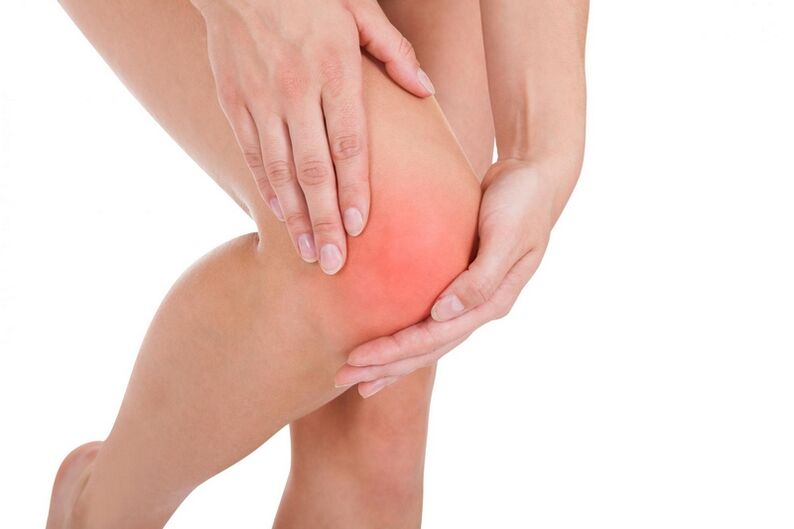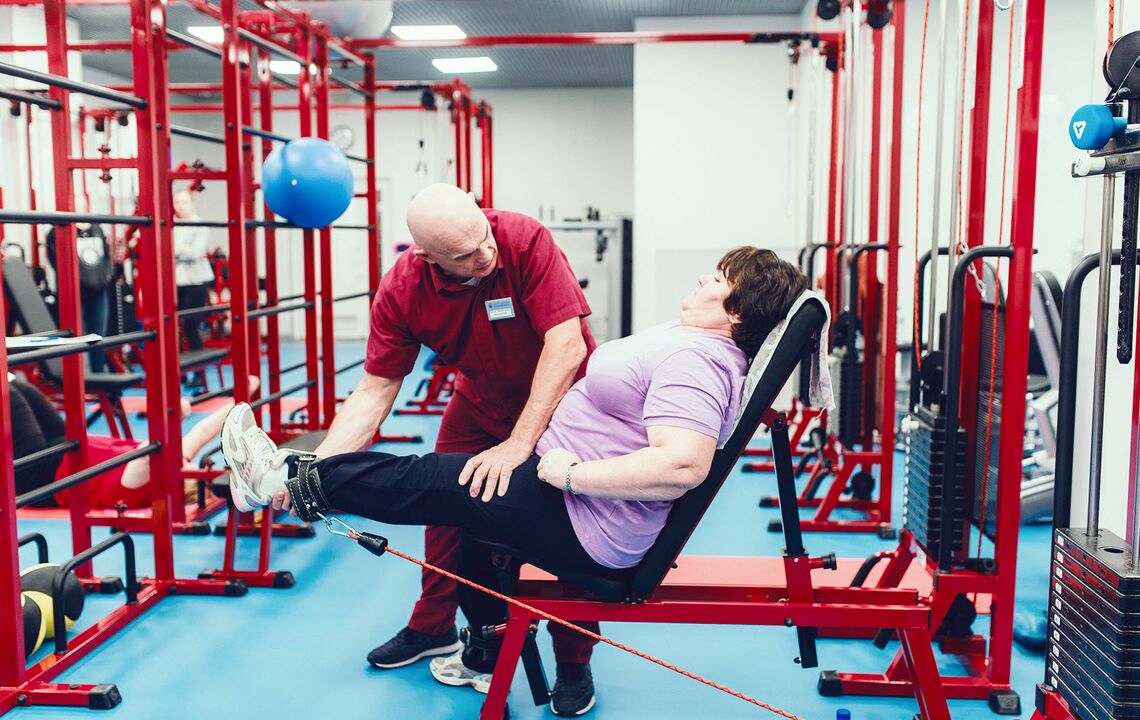Knee osteoarthritis is one of the most common disorders of the musculoskeletal system and, unfortunately, the most common cause of loss of mobility, disability, and sometimes disability.With arthrosis, the cartilage on the joint surface is irreversibly affected, causing the joint to stop working properly and causing pain.
Officially, the disease is known as "osteoarthritis deformans"; another name is gonarthrosis (from the ancient Greek "goni" - knee).The knee joint is the largest joint in the human body and the joint most susceptible to osteoarthritis.It is much less common for this disease to affect the hip and ankle joints.
How does knee joint disease occur?
Normally, healthy cartilage is elastic and smooth, completely covering the moving areas of bones and allowing them to slide.Cartilage also relieves stress on bones when walking or exercising.

When cartilage is destroyed (which is what arthrosis shows), the top layer of elastic tissue becomes thinner.Sometimes the cartilage delaminates and tears occur - this is why the joint loses its primary "shock absorber" and "bearing".The bones begin to rub against each other, the joints swell, gradually lose their normal appearance, and become painful.
Causes and Risk Factors of Knee Arthropathy
Osteoarthritis deformans is more common in older, overweight women, but that doesn't mean younger and physically active people don't suffer from the condition.Sometimes the condition is caused by heavy physical work or too much stress in the gym.
The following is a far from complete list of causes of knee arthritis:
- Sports injuries – meniscal injuries, fractures and dislocations;
- joint inflammatory processes and concomitant diseases;
- Metabolic disorders – Some diseases can lead to the formation of deposits in joints;
- Excessive stress on the joints, including standing for long periods of time or physical labor associated with lifting heavy objects;
- Uneven loading of joints due to flexion of the legs - joints behave faster in overloaded areas.
A lot depends on genes - a person may have a genetic predisposition to knee arthritis.In these people, genes responsible for the development and stability of cartilage tissue are disrupted.
Several factors increase the risk of knee joint disease:
- Weight gain.As joint loads continue to increase, cartilage tissue wears away faster;
- Aged over 40 years old.Most people in this age group experience reduced physical activity.Due to lack of physical activity, muscles atrophy, weak muscle tissue cannot properly supply the joints, and the risk of cartilage damage increases.
Symptoms of Arthropathy
Knee osteoarthritis is not a disease that appears suddenly.It made itself clear strongly in advance: it all started with a slight pain in the knee while walking.The pain may be worse if you have to go up or down stairs.Usually, pain is felt in the knee at the beginning of movement, then the pain disappears and reappears as the joint is under load for a long time.
If you ignore these symptoms and do not consult your doctor, the disease will begin to worsen.The pain then changes from temporary to constant, and the knee begins to hurt more and swell even at rest.As cartilage deteriorates, mobility throughout the joint will be limited.
Some people notice that their knees "react" to changes in weather.This does happen - the nerve endings in the joint capsule are sensitive to changes in atmospheric pressure.
The following symptoms are characteristic of knee joint disease:
- Knee pain when moving and walking;
- Morning stiffness of the knee joint when the range of motion is minimal;
- swelling of the knees;
- A dry, rough crunching sound when moving - This sound is caused by friction on the joint surfaces.
As the condition progresses, symptoms may change:
- Pain can bother you even when you are resting;
- Joints become deformed and lose function;
- Gait changes due to knee deformation.
Degree of knee joint disease
Arthropathy of the knee joint has three stages of development.
Level 1Disease - almost asymptomatic.It begins with the first manifestations of the disease - almost painless, such as leg fatigue - and continues until the first skeletal deformities appear.If the knee changes shape due to synovitis (that is, due to fluid accumulation in the joint), but the cartilage within the joint is not damaged, the disease is still in the first stage.

Level 2It is characterized by progressive changes in bone tissue.Externally, the knee may look the same as in stage one—deformed and increased in size.Increased pain: In addition to pain during movement, a crepitus (crunching sound) may occur in the affected knee.Joint mobility is reduced, making it difficult to squat and walk on uneven surfaces.
Level threeKnee arthritis is the most painful degree of arthritis.At this stage, there is little cartilage tissue left, and if the condition is severe, the bones can grow together.The joint is then completely fixed and the person can move only with the help of crutches or sticks.Usually at this time the doctor will make a judgment about the endoprosthesis of the damaged joint.
Important: Only your doctor can determine the exact extent of the disease's progression.Sometimes, symptoms are mild, and the disease can severely affect the perichondrium - so for an accurate diagnosis, additional studies are often necessary:
- Radiographs - to see if the cartilage surface is deformed and the condition of the joint space;
- CT or MRI - for more detailed study.
How is knee joint disease diagnosed and treated?
The first thing to remember is that prompt diagnosis and early treatment will help stop the disease in the first place.Therefore, the first onset of knee discomfort is a good reason to see your doctor and get checked out.
Doctors diagnose osteoarthritis based on more than just medical history, chief complaints, and the current condition of the knee joint.The results of other studies also play an important role - they are often used to elucidate the stage of knee joint disease and the severity of the disease.
To accurately diagnose knee arthritis, doctors typically prescribe:
- Radiography.If the knee begins to develop pathological processes - for example, calcium crystal deposits or bone tumors appear in the joint capsule - these changes will be visible in photographs.Doctors most often perform X-rays, but no image is complete without a thorough examination of the knee joint, its mobility, and the condition of the muscles that support the knee joint;
- Ultrasound - can be used to assess the condition of the soft tissues around joints.Ultrasound and radiographic results complement each other, allowing doctors to see changes not only in bone structure but also in tissue;
- MRI - magnetic resonance imaging.An MRI is done to treat knee pain if your doctor suspects damage to the meniscus, ligaments, or tendons;
- Arthroscopy is an invasive test that uses a camera to examine the joint space from the inside.The camera is inserted through small incisions in the skin; through these same incisions, the doctor can perform minor procedures—for example, removing a piece of damaged cartilage, partially smoothing out uneven spots in the cartilage tissue, etc.
Treatment of arthrosis usually involves medication, which first attempts to relieve pain, improve joint range of motion, and restore mobility.Arthropathy causes irreversible changes in cartilage tissue - so complete cure is impossible.But it is possible to halt the progression of the disease, slowing further tissue destruction.
This is the standard treatment for knee joint disease:
- Topical treatments – patches, creams, ointments and gels;
- painkillers;
- Anti-inflammatory drugs, especially nonsteroidal drugs.Their use is considered the "gold standard" of medicine, but such drugs damage the gastric mucosa;
- Blockers and chondroprotectants - drugs whose effects appear only after long-term use;
- Rarely - physical therapy and nursing home treatment.
Orthopedic knee braces are recommended to support the joints and relieve pain.But all of the methods listed above are methods that passively affect joint function.
This treatment can only relieve some symptoms - neutralize pain, suppress inflammatory processes, etc.The disease itself will continue to progress, gradually destroying the joints.In the final stages of osteoarthritis, a person not only loses the ability to work, but also loses the ability to move.In this case, the joint must be prosthetically repaired—that is, an artificial structure must be inserted into the knee.This surgical intervention does not leave no trace and has its own limitations - thus reducing quality of life.
Methods that positively impact the joints have a completely different effect when the muscle tone that supplies blood and nutrients to the joints is restored using the body's own resources.This treatment is most effective if done under the supervision of a qualified and experienced doctor.
Exercise therapy for knee joint disease
Kinesiology, or movement therapy, activates the body's own strengths.Correctly chosen loads allow you to effectively engage the necessary muscles and improve the condition of the joints and cartilage by strengthening the muscle corset.
Treatment with exercise therapy begins with a thorough examination and, if necessary, myofascial testing.Sports therapists examine knee soreness and analyze the condition of muscle tissue, tendons, and ligaments.Consider ultrasound, CT, MRI, and radiographic data to determine the extent of knee arthritis and plan treatment exercises.
Courses are conducted on a multifunctional simulator - a proprietary simulator with a special design.Exercises should be performed to avoid placing excessive stress on the joints and to exercise only those muscles that need strengthening and development.In the initial stages, patients are required to perform floor joint gymnastics - which involves exercises on a mat without weights.
The therapeutic effect of exercise therapy is guaranteed by restoring blood microcirculation and improving lymphatic drainage.Cartilage receives more nutrients, joint development slows or even stops completely, and joint biomechanics are fully restored.
A disease as serious as knee arthritis cannot be ignored.The best way to prevent it is to maintain a healthy lifestyle: a balanced diet, physical activity.However, if joint problems have already begun, you should not wait for serious warning signs - you should seek help from a qualified doctor at the first symptoms.

























